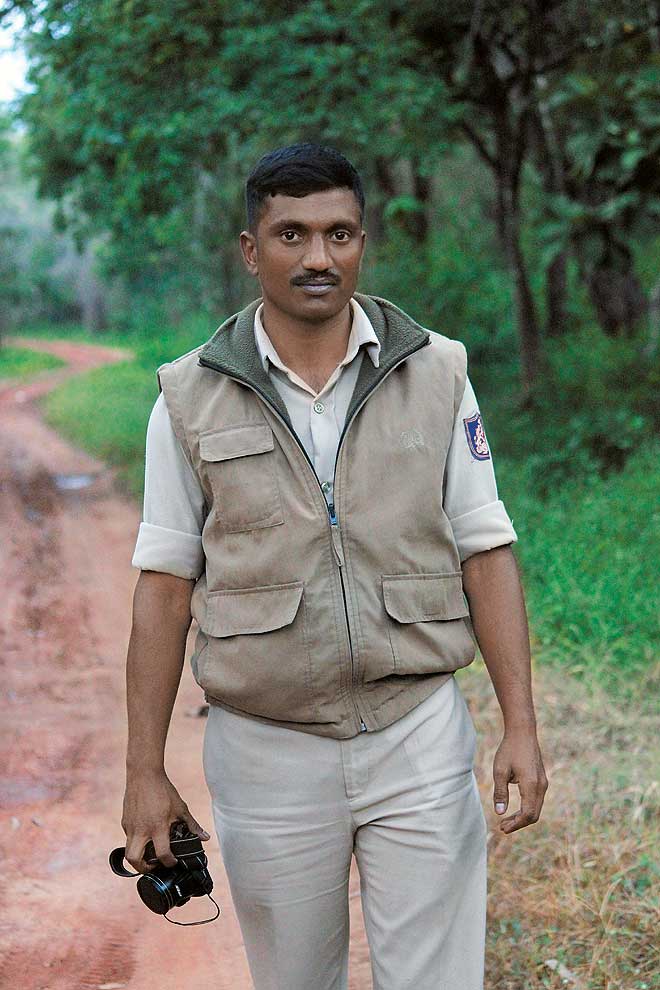OT: What made you decide to become a forest ranger?
M. Yograj: When I was young, I
OT: What do your duties as a ranger involve?
M. Yograj: My responsibilities include recording the population counts of the animals, assisting guests on safaris, maintaining the reserve’s facilities, repairing and maintaining trails and tracks, enforcing forest regulations and taking measures to prevent accidents and forest fires. The most challenging aspect of the job, however, is keeping villagers from the bordering villages from coming into the forest. They have shared their habitat with the animals for as long as they can remember, and enter the forest to collect honey and firewood, and sometimes to hunt deer or wild boar.
OT: What do you like the most about your job?
M. Yograj: That I get to work with tigers! How many people get to do that in a 9-5 job? Each day is different and rewarding in its own special way. Also, I don’t have to battle traffic or the noise and pollution of a city to get to work. I work in a peaceful and quiet environment in solitude. It is the best job in the world.
OT: Do you ever feel unsafe with so many wild animals around you?
M. Yograj: That depends on how much you know about animals. No animal will attack you unless provoked. I usually go into the forest on foot, without even a stick — with just my camera to take photographs for our records. I have been in tricky situations several times. In April this year, when I was on my routine round of a core area, I saw a tiger walking away from me. I wanted to identify whether it was a resident tiger or a visitor, so I coughed lightly to make it turn its head — we usually identify a tiger by the set of stripes on its forehead. He not only turned, but also started walking towards me. I was, of course, petrified. But I thought to myself that even if I have to die, I will die working. So I raised my camera to take a photograph, and as soon as I clicked, the flash fired by mistake. This startled the tiger and it bounded away into a bund. My camera was my only defence.
OT: What are the most challenging aspects of your profession?
M. Yograj: I would say everything boils down to the commercialisation of tourism. Bhadra has a sizeable animal population, but visitors may not be able to spot all the animals on their visits to the park. It is difficult to make them better understand the behaviour and habitat of wild animals. We are a little understaffed, and that is probably the result of not being as popular as a Corbett National Park. But we want minimal interference in the animals’ natural ecosystem, and therefore don’t want to commercialise it. There are no canteens or cafés around the reserve — most people find that strange. As far as possible, we do try and educate and sensitise them.
OT: Where do you see yourself in five years?
M. Yograj: Right here. I don’t know of a world other than Bhadra and Lakkavalli. You can leave me blindfolded in any part of the forest, and I will find my way back. I just hope that there will be more tigers for us to spot by that time.
Forest ranger
Karnataka
leopards


